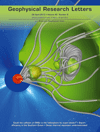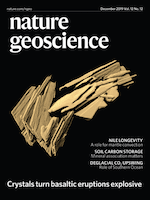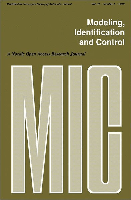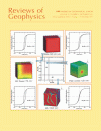
Geoscientific Model Development
Scope & Guideline
Transforming Data into Insightful Earth Models
Introduction
Aims and Scopes
- Earth System Modeling:
The journal covers a wide range of Earth system models that integrate atmospheric, oceanic, and land surface processes, facilitating a comprehensive understanding of climate dynamics. - Numerical Methods and Algorithms:
A significant focus is placed on the development of new numerical methods, algorithms, and frameworks that improve the performance, accuracy, and efficiency of geoscientific models. - Data Assimilation and Inversion Techniques:
GMD publishes works that develop and apply data assimilation techniques that enable the integration of observational data into models, enhancing predictive capabilities. - Model Intercomparison and Evaluation:
The journal encourages comparative studies among different models to evaluate their performance and understand discrepancies in simulation results. - Application of Machine Learning:
There is a growing emphasis on the application of machine learning techniques to improve model parameterization, enhance data assimilation, and analyze complex geophysical processes. - Impact Studies and Scenario Projections:
GMD publishes research that assesses the impacts of climate change and other environmental stressors using model simulations to project future scenarios.
Trending and Emerging
- Machine Learning Integration:
The integration of machine learning techniques into geoscientific modeling is rapidly gaining traction, with numerous studies exploring how these methods can enhance model accuracy and efficiency. - Coupled Modeling Approaches:
There is an increasing trend towards coupled models that integrate various Earth system components (e.g., atmosphere-ocean-land interactions) to provide more holistic insights into environmental processes. - High-Resolution Modeling:
The development and application of high-resolution models are on the rise, enabling more detailed simulations that capture fine-scale processes relevant for regional climate and environmental assessments. - Modeling of Extreme Events:
Research focused on simulating and predicting extreme weather and climate events is becoming more prominent, reflecting the growing need to understand and mitigate impacts associated with climate change. - Sustainability and Policy Modeling:
Emerging themes include the modeling of sustainability scenarios and policy impacts, providing valuable insights for decision-making in environmental management and climate policy. - Open-Source Modeling Tools:
The trend towards open-source modeling frameworks is increasing, promoting collaborative development and accessibility of models for the research community.
Declining or Waning
- Traditional Statistical Models:
There is a noticeable decrease in the publication of traditional statistical modeling approaches as more researchers turn to advanced numerical and machine learning methods for climate and environmental modeling. - Simplistic Climate Models:
The tendency to publish simplistic models that do not account for the complexities of Earth system interactions has diminished, with a shift towards more integrative and complex modeling frameworks. - Regional Focus Models:
Research centered on highly localized models without broader applicability is less prevalent, as there is a growing trend towards developing models that can be applied globally or across multiple regions. - Static Parameterization Techniques:
The use of static parameterization techniques in model development is declining, with a shift towards dynamic and adaptive parameterizations that can improve model responsiveness to changing conditions.
Similar Journals

Journal of Advances in Modeling Earth Systems
Connecting Researchers to the Pulse of Planetary Science.Journal of Advances in Modeling Earth Systems, published by the American Geophysical Union, is a foremost open access journal that has been contributing to the fields of Earth and Planetary Sciences, Environmental Chemistry, and Global and Planetary Change since its inception in 2009. With a remarkable impact factor and consistently maintained Q1 category rankings across several key disciplines, this journal stands out as a leading platform for disseminating innovative research and modeling advancements critical to understanding Earth systems. It is ranked in the top 5% of Earth and Planetary Sciences and Environmental Chemistry, emphasizing the high caliber of work published within its pages. The journal engages a diverse audience, including researchers, professionals, and students, by providing a comprehensive repository of cutting-edge studies and findings that are openly accessible to the global scientific community. With its headquarters in the United States and converging research from 2011 to 2024, the Journal of Advances in Modeling Earth Systems remains an essential resource for those seeking to explore and advance the frontiers of environmental science and modeling techniques.

GEOPHYSICAL RESEARCH LETTERS
Illuminating the Path of Geophysical Inquiry.GEOPHYSICAL RESEARCH LETTERS is a renowned academic journal published by the American Geophysical Union that plays a pivotal role in advancing the field of Earth and Planetary Sciences. Established in 1974, this esteemed journal provides a platform for the latest research and innovations in geophysics, including but not limited to, solid earth, atmospheric sciences, and oceanography. With its impressive ranking of #7 out of 165 in Geophysics and #13 out of 195 in General Earth and Planetary Sciences according to Scopus, and being categorized in the Q1 quartile for both fields in 2023, it is a leading choice for academic and professional researchers alike. While GEOPHYSICAL RESEARCH LETTERS does not currently offer open access, it remains committed to disseminating high-quality, peer-reviewed scientific literature. With ongoing contributions expected through to 2024, this journal is essential for those who seek to deepen their understanding and engage with cutting-edge developments in geophysical research. Its influence and reach underscore its significance in shaping the future of geophysical inquiry.

Nature Geoscience
Unveiling the Mysteries of Our Planet.Nature Geoscience, a premier journal published by NATURE PORTFOLIO, provides a platform for the dissemination of high-quality research in Earth and Planetary Sciences. With an impressive impact factor reflecting its significance — ranking in the 99th percentile and positioned at #1 out of 195 in Scopus Ranks within its category, this journal is a leading authority in its field. Since its inception in 2008, it has fostered interdisciplinary collaboration, addressing critical challenges such as climate change, natural disasters, and resource management. Although it does not offer Open Access, the journal is accessible through various research libraries, ensuring that vital findings reach a broad audience. The journal's esteemed reputation in the Q1 quartile of Earth and Planetary Sciences makes it an essential resource for researchers, professionals, and students aiming to advance their understanding of geoscientific phenomena.

Earth and Planetary Physics
Exploring the Mysteries of Our Planet and BeyondEarth and Planetary Physics, published by SCIENCE PRESS, is a distinguished open-access journal that has been a vital resource for the scientific community since its inception in 2017. With both ISSN and E-ISSN 2096-3955, this journal contributes significantly to the fields of Astronomy and Astrophysics, Atmospheric Science, and Space and Planetary Science, consistently holding a Q2 quartile ranking across these categories as of 2023. Based in the United States, its editorial board consists of renowned experts dedicated to advancing the understanding of planetary phenomena and Earth processes. The journal prides itself on its rigorous peer-review process and broad readership, facilitating the dissemination of cutting-edge research and innovative methodologies. This commitment is reflected in its strong Scopus rankings, positioning it competitively within its scope—rank #33 in Astronomy and Astrophysics and rank #40 in Space and Planetary Science. As an open-access journal, Earth and Planetary Physics is committed to providing free and global access to high-quality research, thereby enhancing visibility and impact for its authors while catering to researchers, professionals, and students eager to explore the intricacies of our planet and beyond.

METEOROLOGY AND ATMOSPHERIC PHYSICS
Pioneering Research in Meteorology and Atmospheric PhysicsMETEOROLOGY AND ATMOSPHERIC PHYSICS is a premier journal published by SPRINGER WIEN, dedicated to advancing the study of atmospheric phenomena and weather-related sciences. With an ISSN of 0177-7971 and an E-ISSN of 1436-5065, the journal has established itself as an important contributor in the field, particularly noted for its contributions in atmospheric science, holding a Q3 ranking in the 2023 category quartiles. Covering a wide array of topics from meteorological modeling to the physics of the atmosphere, it serves researchers, professionals, and students alike, facilitating the dissemination of significant findings and innovative research. The journal’s acceptance of articles until 2024 encourages a continuous influx of knowledge, and despite its lack of Open Access, it plays a crucial role in enriching the academic landscape for those engaged in Earth and planetary sciences, holding a commendable rank of 78 out of 148 in Scopus. Located in the scenic city of Vienna, Austria, the journal is positioned to harness the vibrancy of the academic community, providing a platform for valuable insights that can drive forward the field of meteorology and atmospheric physics.

Computational and Mathematical Methods
Exploring New Frontiers in Mathematical Modeling and ComputationComputational and Mathematical Methods is a dynamic peer-reviewed journal published by Wiley-Hindawi, focusing on innovative research in the fields of computational mathematics, mechanics, and theory. Since its transition to an Open Access format in 2022, the journal has enhanced its accessibility to researchers and practitioners globally, providing a platform for the dissemination of high-quality studies that contribute to emerging developments in mathematical modeling and computational techniques. Based in the United Kingdom, this journal is committed to fostering collaboration amongst scholars, evidenced by its rankings within Scopus: Q3 in computational mathematics, computational mechanics, and computational theory and mathematics, reflecting its relevance and influence within these critical fields. With an emphasis on interdisciplinary studies, Computational and Mathematical Methods is an essential resource for researchers, professionals, and students seeking to expand their knowledge and apply cutting-edge methodologies to practical challenges.

Numerical Mathematics-Theory Methods and Applications
Innovative Solutions Through Numerical AnalysisNumerical Mathematics: Theory Methods and Applications, published by GLOBAL SCIENCE PRESS, stands as a pivotal journal in the fields of applied and computational mathematics, control and optimization, as well as modeling and simulation. With an ISSN of 1004-8979 and an E-ISSN of 2079-7338, this journal has been committed to disseminating high-quality research since its establishment in 2010, curating contributions that reflect the latest advancements in numerical methodologies and their diverse applications. As a Q2 journal in its category for 2023, it ranks favorably in the Scopus metrics, with notable positions in various mathematical disciplines. Although it does not currently provide open access, it remains an essential resource for researchers and professionals seeking to deepen their understanding of numerical methods and their applications. The journal’s esteemed reputation, coupled with its strategic focus on emerging trends in mathematics, makes it an invaluable platform for scholars who wish to contribute to and stay informed about cutting-edge developments in this dynamic field.

MODELING IDENTIFICATION AND CONTROL
Advancing Knowledge in Control and Systems EngineeringMODELING IDENTIFICATION AND CONTROL is a prominent academic journal dedicated to the fields of Computer Science Applications, Control and Systems Engineering, Modeling and Simulation, and Software. Published by MIC in Norway, this open access journal has been providing valuable insights and innovative research since 1980, promoting the free dissemination of knowledge. With a reputation reflected in its 2023 quartile rankings—Q3 in Computer Science Applications, Q2 in Control and Systems Engineering, and Modeling and Simulation, as well as Q3 in Software—this journal plays a vital role in advancing theoretical and practical solutions within its disciplines. Researchers and professionals benefit from its rigorous peer-review process and impactful publications, fostering collaboration and the exploration of emerging technologies across various applications. The journal's continual commitment to excellence is exemplified by its active presence in Scopus, where it maintains respectable rankings in relevant engineering and computer science subcategories, supporting its goal to be a pivotal resource for scholarly communication and practical advancements.

Open Geosciences
Advancing Knowledge in Geosciences for All.Open Geosciences, published by DE GRUYTER POLAND SP Z O O, is a prominent open access journal that has been serving the scientific community since its inception in 2015. With an ISSN of 2391-5447, this journal focuses on the dynamic fields of Earth and Planetary Sciences as well as Environmental Science, securing a commendable Q2 ranking in both categories as of 2023. Situated in Germany, Open Geosciences is committed to disseminating high-quality research and facilitating innovative discussions surrounding geosciences. The journal embraces a diverse range of topics, aiming to foster collaboration among researchers, professionals, and students worldwide. As an open access publication, it enhances visibility and accessibility of its articles, allowing for greater engagement within the global scientific community. This is further substantiated by its respectable Scopus rankings—77th out of 195 in General Earth and Planetary Sciences and 97th out of 219 in Environmental Science—which underscore its significance in advancing geoscientific knowledge. Whether you are a researcher looking to publish your findings or a student seeking valuable insights, Open Geosciences stands out as a crucial resource in the exploration of our planet and its environment.

REVIEWS OF GEOPHYSICS
Advancing Geophysical Research, One Review at a Time.REVIEWS OF GEOPHYSICS is a prestigious journal published by the American Geophysical Union, renowned for its critical contributions to the field of geophysics since its inception in 1963. With an impact factor that signifies its scholarly excellence and a Q1 ranking in Geophysics (2023), this journal is the leading platform for disseminating groundbreaking research across Earth and Planetary Sciences, currently holding the top position in its category. As a valuable resource for researchers, professionals, and students alike, it offers comprehensive reviews that synthesize significant advancements and theoretical insights, fostering the exchange of innovative ideas within the geophysical community. Although typically not an open-access journal, its influence is bolstered by its rigorous peer-review process and publication standards, ensuring that each article meets the highest academic criteria. Well-positioned in the heart of Washington, DC, the journal remains an essential reference for those seeking to remain at the forefront of geophysical research developments.